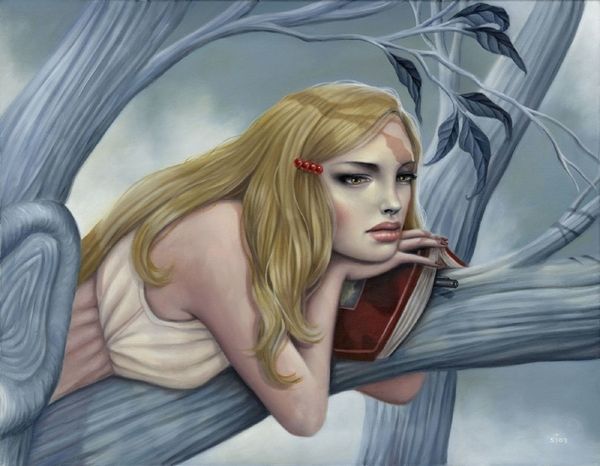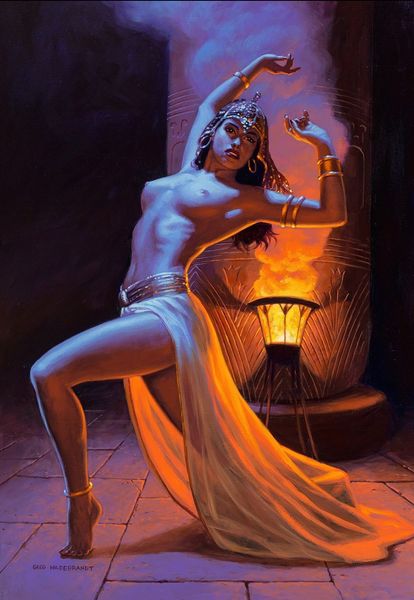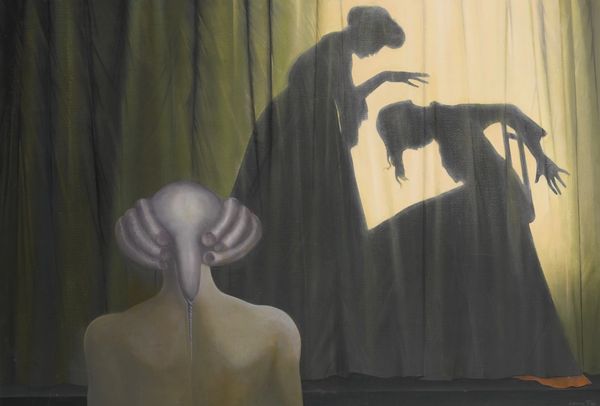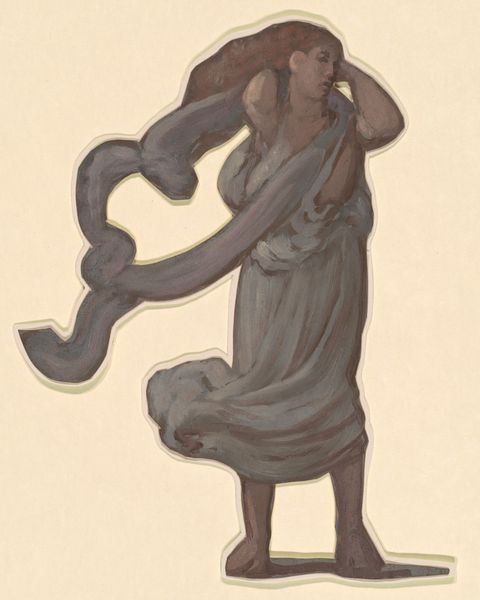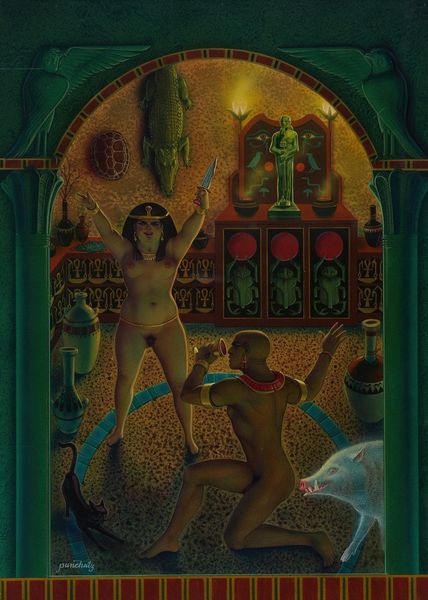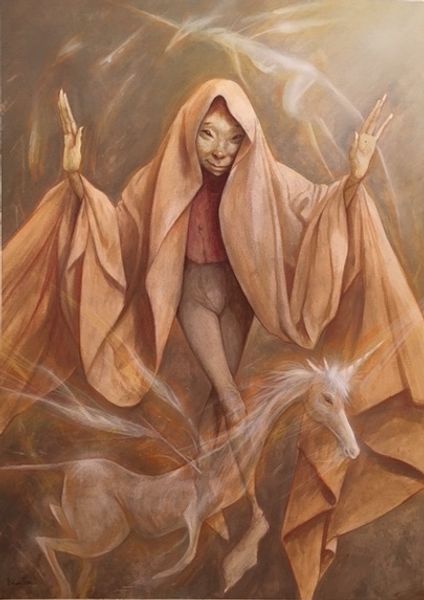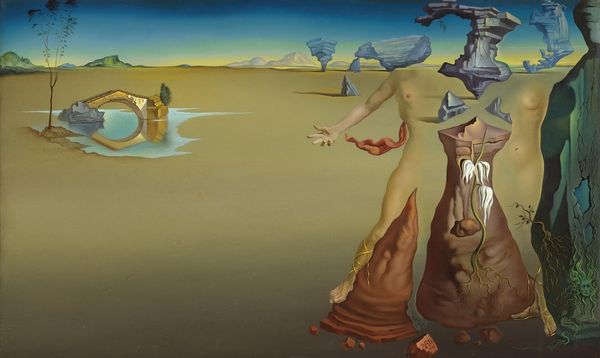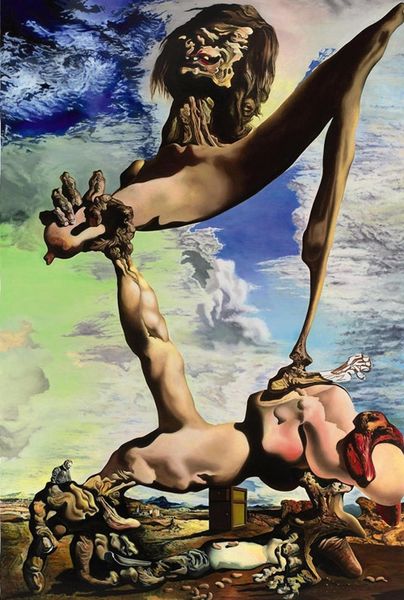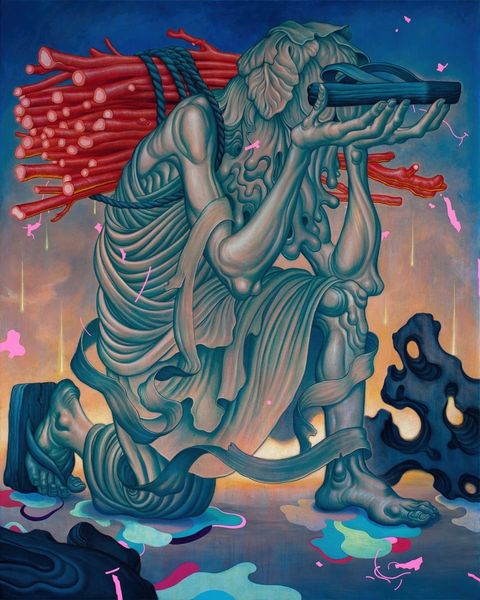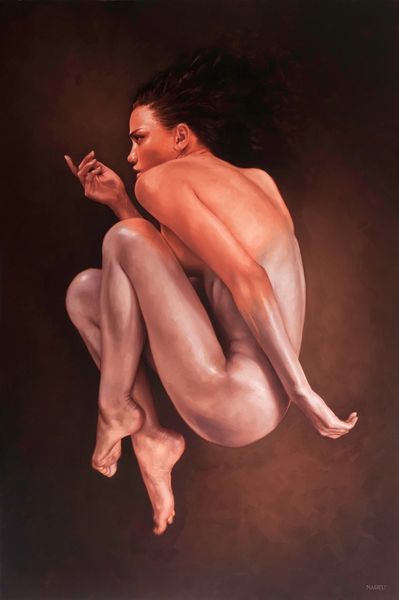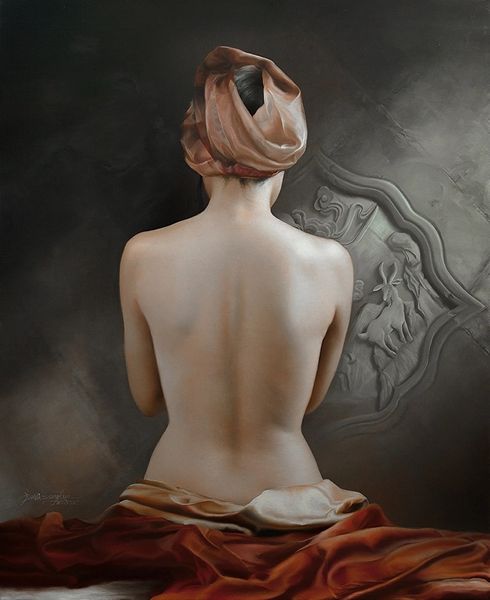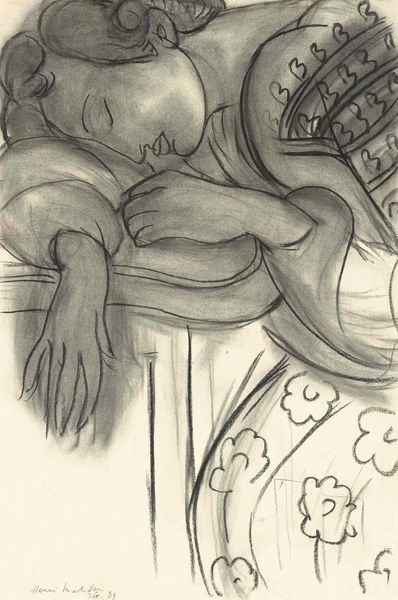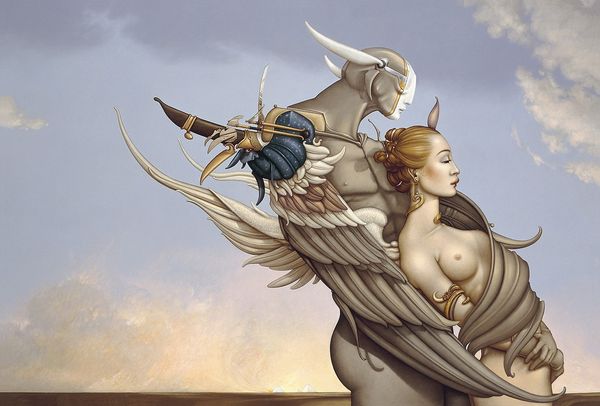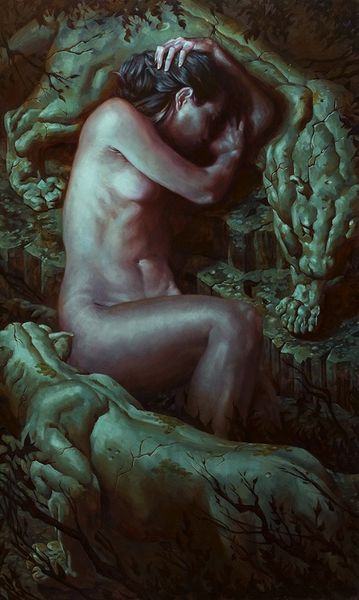
painting, acrylic-paint
#
portrait
#
contemporary
#
narrative-art
#
painting
#
acrylic-paint
#
figuration
#
nude
Copyright: Saul Zanolari,Fair Use
Curator: Well, isn't this striking? We are looking at a piece from 2015, a work on acrylic paint entitled “Prophet Isaiah (Detail)” by Saul Zanolari. Editor: The first thing that grabs me is the almost hyper-real skin tone. That fleshy pink…it feels like a statement, somehow. What do you make of that deliberate coloration, knowing the subject? Curator: It’s quite provocative. Zanolari might be evoking traditional religious art but with a distinct, almost fleshy, modern twist. Isaiah, traditionally a figure of strength and divine messenger, is here rendered in a way that emphasizes the human form, its vulnerability. Perhaps questioning how we represent holiness itself? Editor: The branches he's holding, are they meant to connect him to the natural world, or something more specific? Is there any overt Christian iconography at play, like perhaps allusions to the Crown of Thorns? I also can’t help but wonder about the artistic choices behind depicting a nude figure, especially given the historical context surrounding how nudes are received in the art world and by the public at large. Curator: That contrast between the organic – those stark branches – and the rendered flesh is very purposeful. I agree there's definitely a tension with religious symbolism and tradition at play. Isaiah was a complex figure; part moral authority, part seer. Binding him to branches may symbolize humanity entwined with prophetic vision, or even perhaps the burden and pain inherent in bearing witness. He has a resigned affect; the gesture feels far from glorious. Editor: That burden is palpable. Looking again, I can't shake this unsettling blend of classical ideals mixed with an intentionally unsettling contemporary presentation. It prompts considerations regarding both beauty and discomfort, doesn’t it? Where do we situate art like this today in museums? Does it challenge or simply re-contextualize the past? Curator: Absolutely. It asks if sacred figures must conform to idealized versions or if art can explore the discomfort and complexities of humanity, even within a spiritual framework. Art’s public role is often about holding such questions up to the light, stirring precisely these vital discussions on representation and belief. It redefines what those visuals mean. Editor: A compelling paradox of then and now. Thank you! Curator: Indeed. A stimulating encounter.
Comments
No comments
Be the first to comment and join the conversation on the ultimate creative platform.
